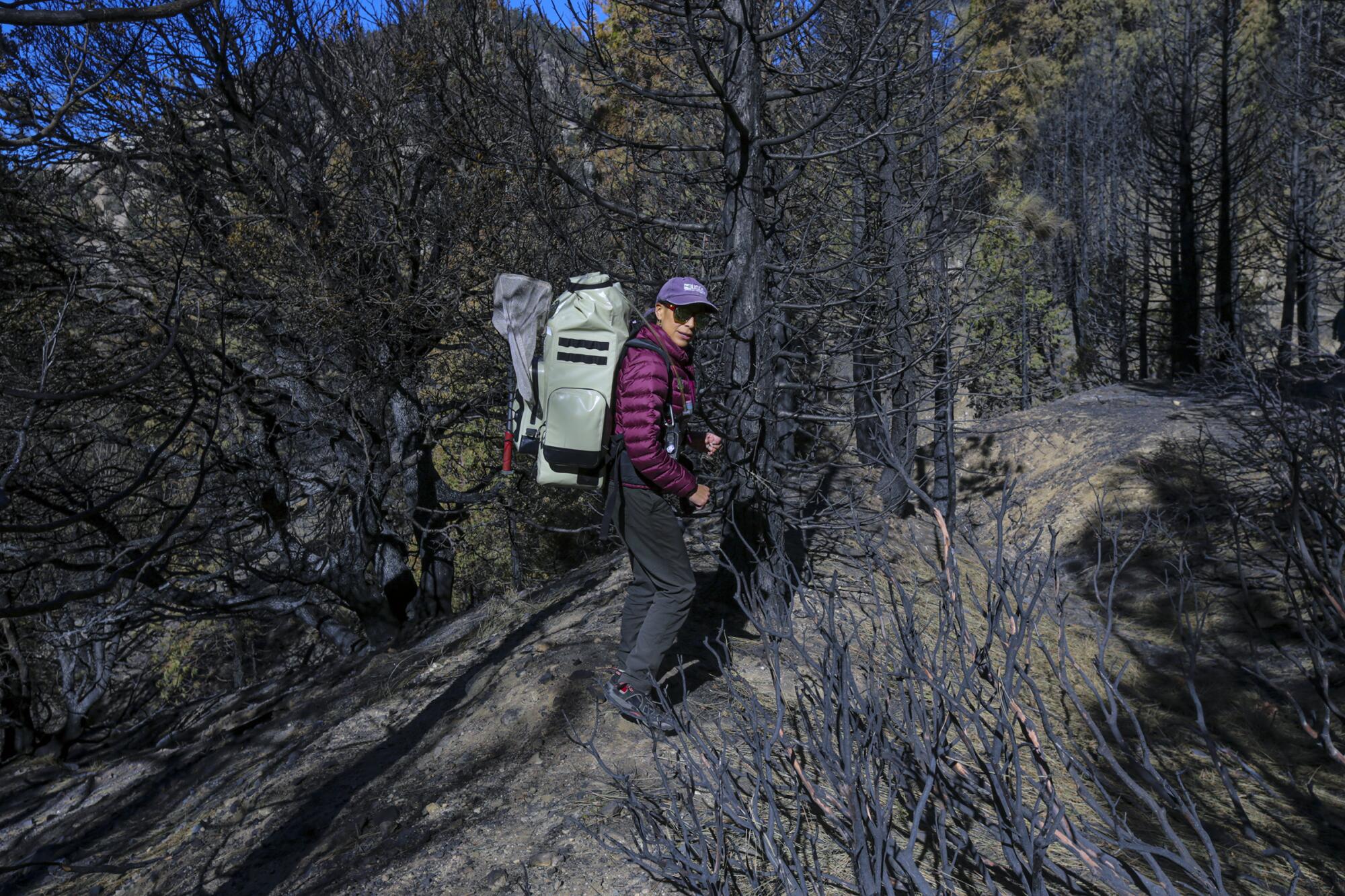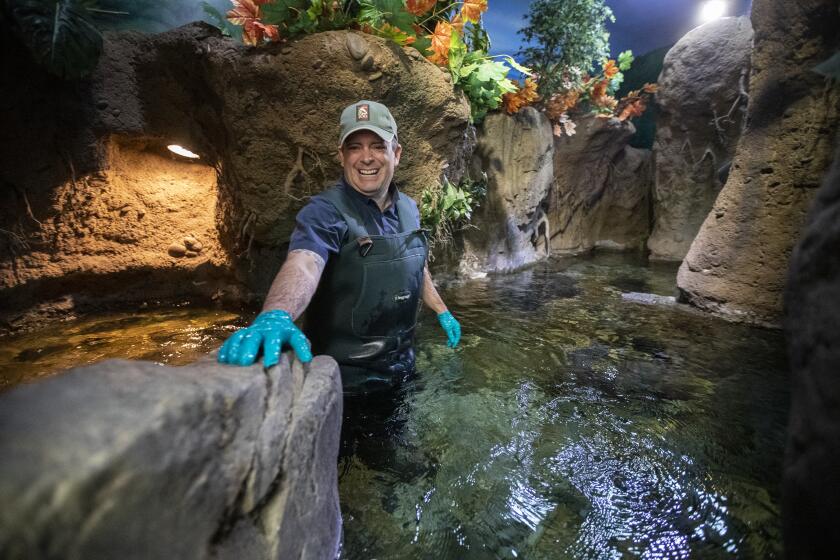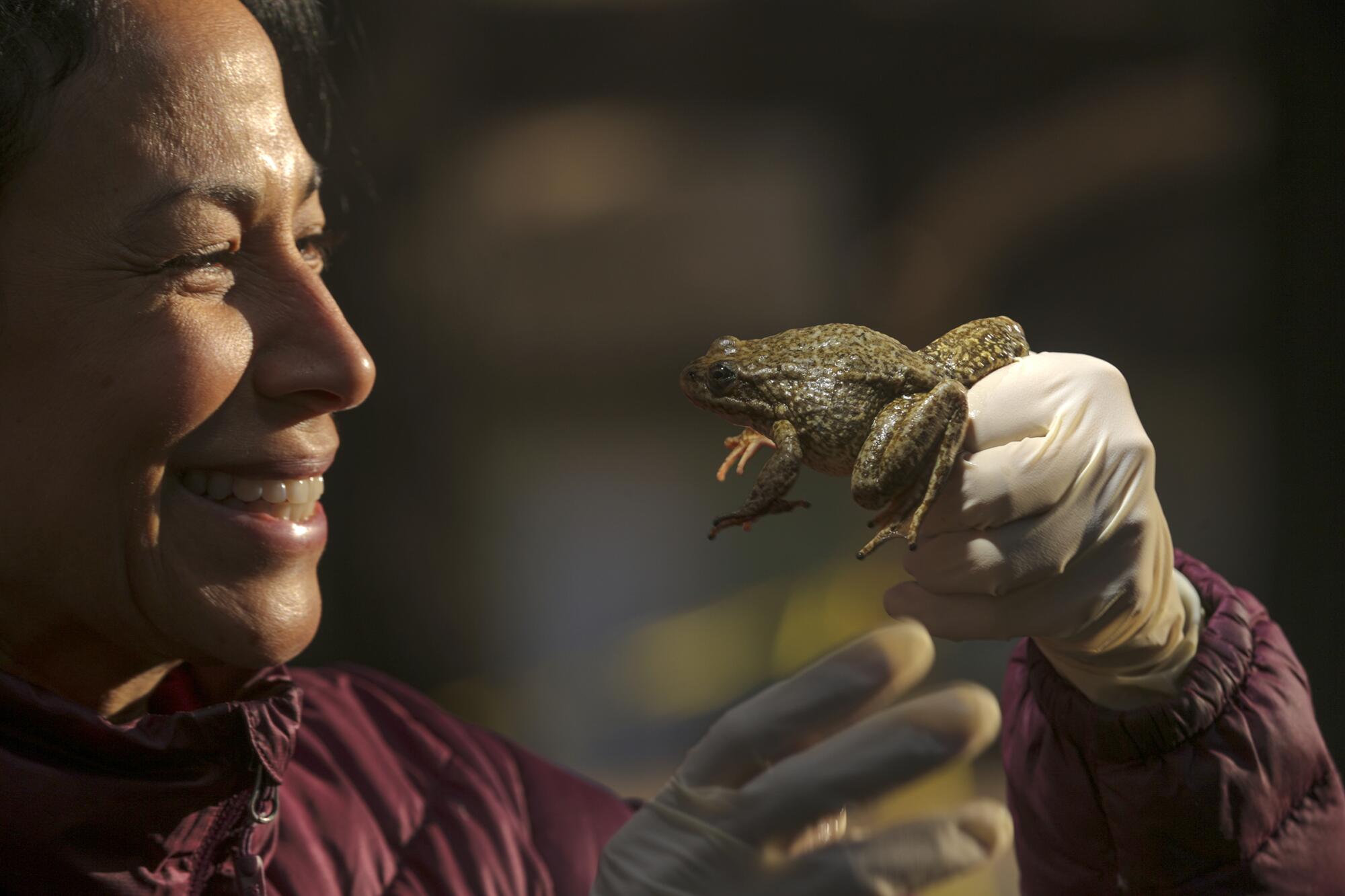
Just weeks after the Bobcat fire ravaged the San Gabriel Mountains, state and federal biologists are racing to salvage as many federally endangered species as possible before storms could inundate the animalsâ last outposts with mud and debris.
Creating clouds of ashes and dust with every step in the shadows of skeletal trees scorched by the blaze, eight U.S. Geological Survey scientists on Wednesday made their way down to a vein of water at the bottom of steep Little Rock Canyon, armed with long-handled nets, backpack coolers and emergency rescue permits.
âThis may be the last time in my life that I see wild mountain yellow-legged frogs in the last best place for them,â said biologist Robert Fisher, gazing at dozens of tadpoles browsing on algae at the bottom of a granite tub.
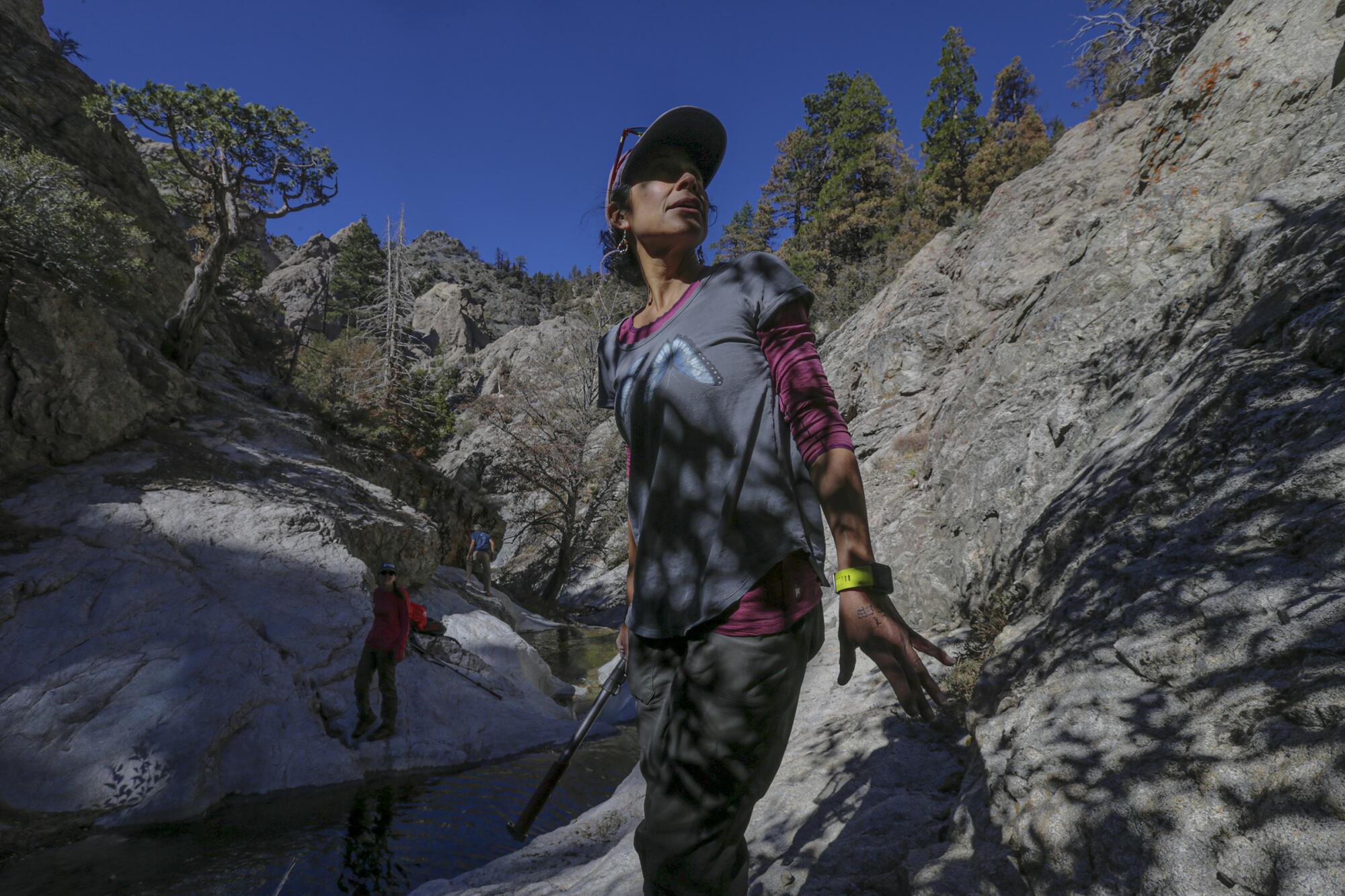
âThis whole area,â he added in a voice full of sadness, âwill soon be buried in mud.â
It was one of several hastily arranged search and rescue operations underway or in the planning stages across the ancestral habitats of many rare species that could be wiped out by winter rains in the fire zone: Southern California mountain yellow-legged frogs, Pacific pond turtles and such fish as Santa Ana suckers, speckled dace and arroyo chubs.
The efforts have presented state and federal wildlife authorities with daunting challenges that could leave some animals that are fully protected by law marooned indefinitely.
For example, the Geological Survey biologists managed to expedite the issuance of special permits to capture 30 adult yellow-legged frogs and 200 tadpoles from a milelong stretch of Little Rock Creek, about 20 miles north of downtown Los Angeles. But they were hard-pressed to find suitable locations elsewhere in which to release them, or facilities that had the space or ability to accommodate the basic needs of the unusually sensitive alpine amphibians even on a temporary basis.
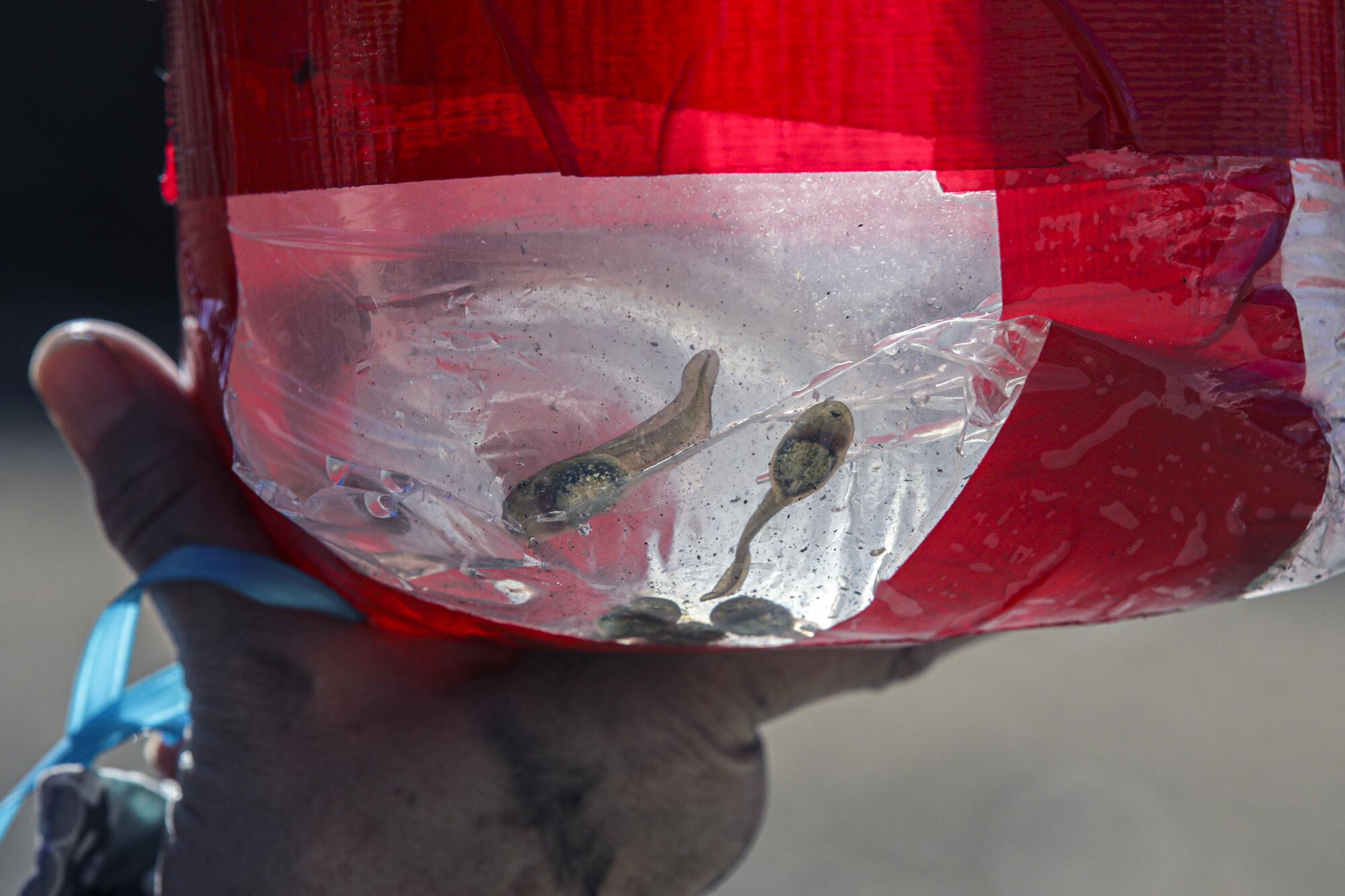
âWe have the support of all the responsible wildlife agencies,â said Adam Backlin, who led the Little Rock Creek rescue. âBut almost every zoo we contacted was already at capacity and unable to help.â
Meanwhile, they were running out of time to complete the extensive research, preparations and permitting processes needed to translocate endangered frogs to alternative sites where they might thrive: cascading streams of cool, clean water devoid of predatory trout and bullfrogs and spared by the Bobcat and Station fires, which together charred 275,000 acres in just 11 years.
Cutting their losses, the biologists decided to limit their catch Wednesday to 50 tadpoles that would be transported in an aging sedan â before rush hour, if possible â to holding tanks at the Los Angeles Zoo, which had relocated some of its own menagerie in order to make room for the amphibian refugees.
Ian Recchio runs the âFrog Shackâ at the L.A. Zoo, where biologists are racing against time to breed and reintroduce endangered mountain yellow-legged frogs.
The 30 adult frogs were to be carried on foot, in backpack coolers, across eight miles of roadless wilderness to a remote tributary of the East Fork of the San Gabriel River.
But a cold snap in the mountains had sent the frogs into hiding. By the end of an exhaustive search, the scientists were able to catch only 15 of the estimated 100 frogs clinging to existence in the canyon.
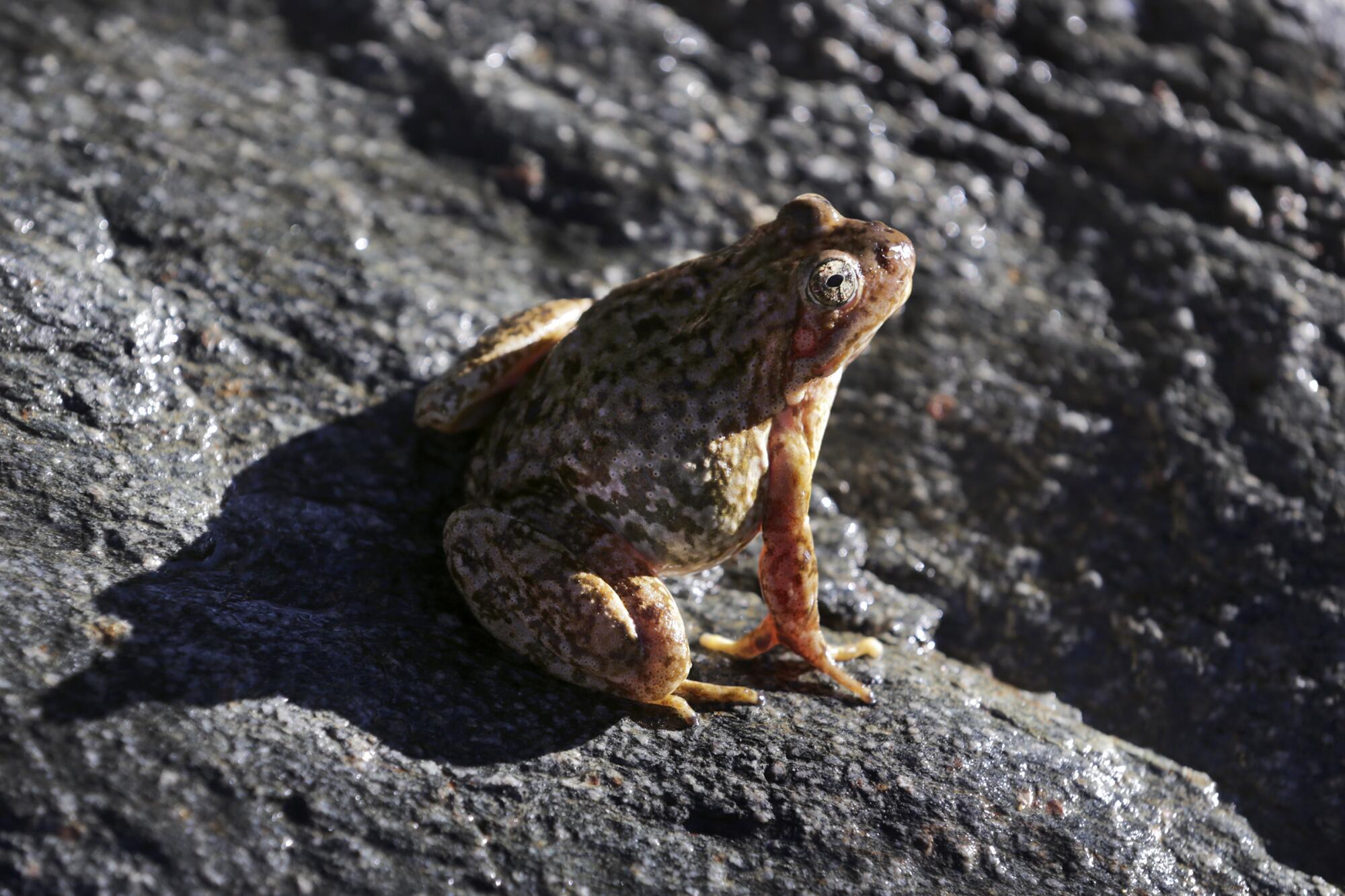
Separately, state and federal biologists a week ago moved 150 federally endangered unarmored threespine stickleback fish that had been rescued after the 2016 Sand fire burned through Soledad Canyon in northwestern L.A. County and released in carefully selected areas of the Angeles National Forest.
Now, with those locations threatened by mudslides in new burn areas, the fish were returned, yet again, to Soledad Canyon, which over the last four years has become suitable for repopulation.
Critics of that recent recovery effort and others in the San Gabriels include Ileene Anderson, a biologist with the Center for Biological Diversity, who described them as âa ridiculous way to try to recover a critically imperiled species that have been endangered for decadesâ due to urbanization, disease, drought, wildfires and nonnative predators such as crayfish, bullfrogs and trout.
âThis hasty recovery plan provides no guidance for the sticklebackâs new long-term reality of climate-change-driven drought and wildfire that create massive erosion and fill in streams,â she said. âInstead, the wildlife agencies are in panicky triage, with no real plan except to move the fish from one stream to the next to the next as their habitat dries up or fills in.â
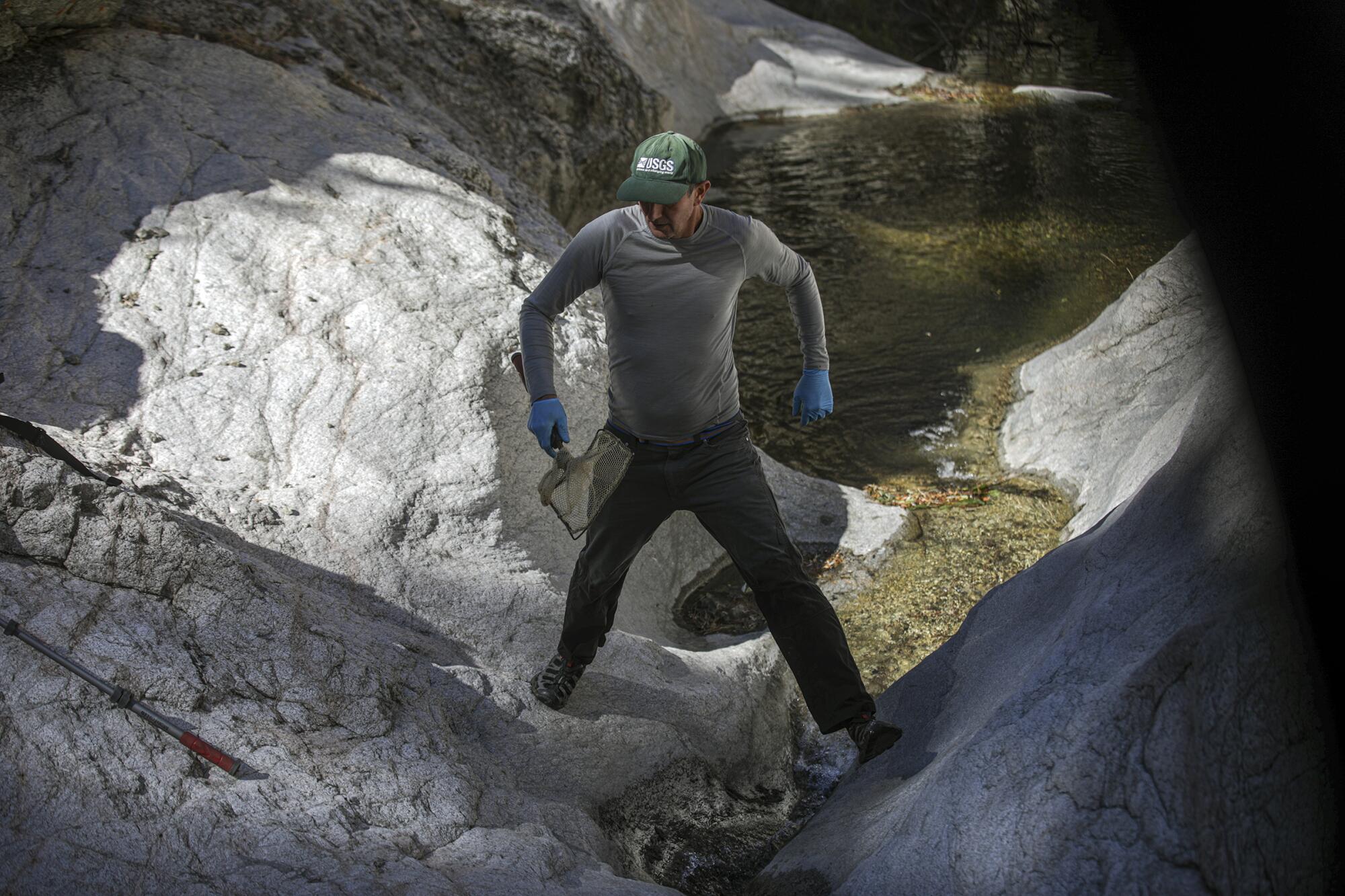
The Center for Biological Diversity on Wednesday filed notice of its intent to sue the U.S. Fish and Wildlife Service to force it to update what it claims is âan inadequate, 35-year-old recovery plan for a tiny, scale-less fish called the unarmored threespine stickleback.â
Still to be determined is what, if anything, can be done to save descendants of the estimated 23,000 rare native fish captured in the upper San Gabriel River in 2006 and relocated near the confluence of the West Fork of the San Gabriel River in order to make way for a massive sediment removal project in the San Gabriel Reservoir, about 18 miles north of Azusa.
Los Angeles County flood-control authorities are committed to protecting communities downstream by steering the impending flow of debris away from crucial infrastructure, including Cogswell Dam, which controls the flow in an eight-mile stretch of the West Fork and helps recharge the metropolitan aquifer in the flatland below.
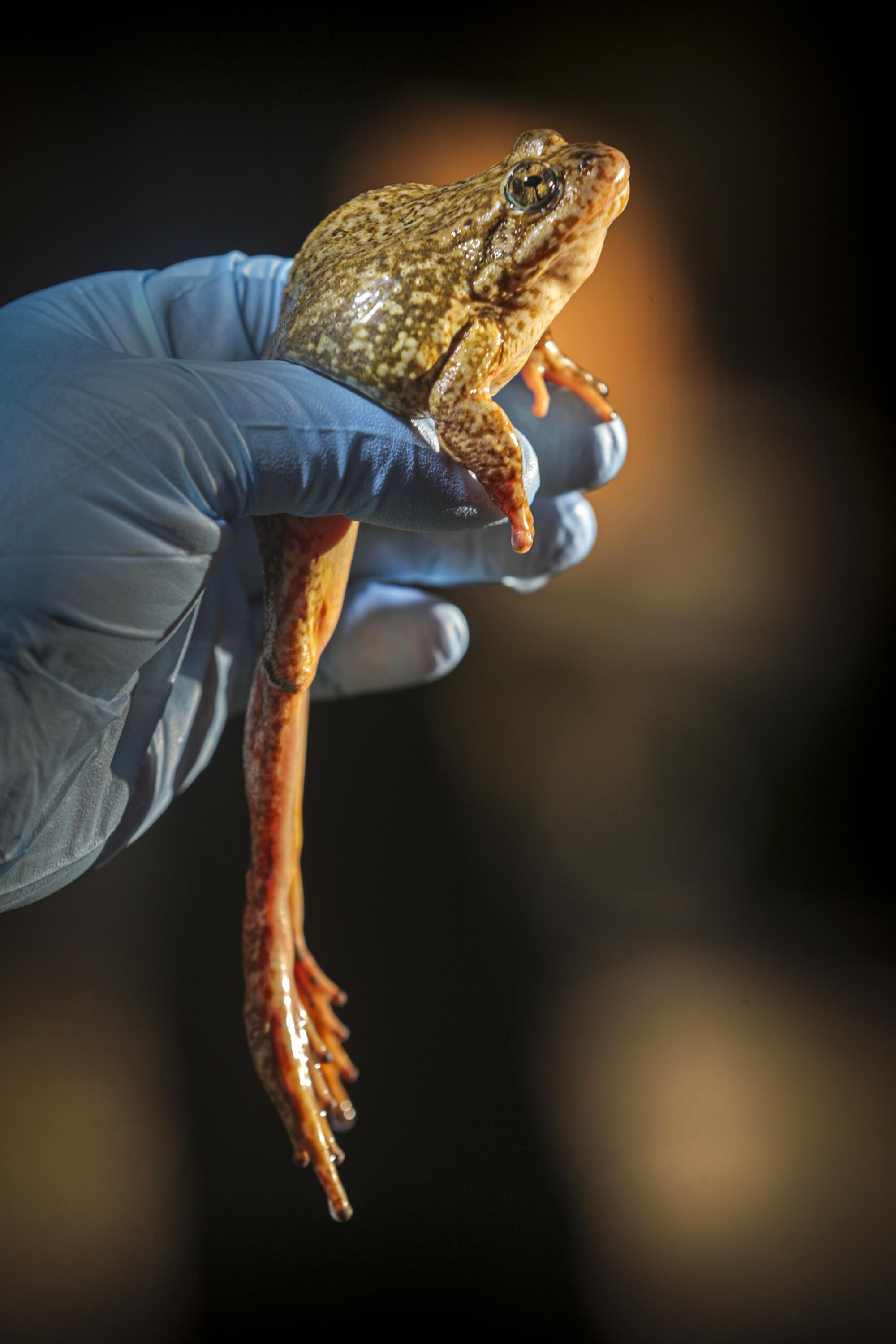
In the meantime, state and federal wildlife agencies are finalizing plans to rescue an isolated population of western pond turtles, a state-listed species of special concern, from a remote tributary of the West Fork that runs through the heart of the San Gabriel Mountains National Monument.
âAfter frantic negotiations in recent days,â Fisher said, âthe San Diego Zoo has agreed to move 21 pond turtles of unknown origin that it had been keeping in holding tanks to the Santa Ana Zoo.
âThat enabled the San Diego Zoo to take in the wild pond turtles we hope to recover,â he added. âOn Thursday, we received special permits from state wildlife authorities to proceed.â
Wildfire is a natural ecological phenomenon, biologists say. Decades ago, when hundreds of miles of streams throughout the San Gabriel, San Bernardino and San Jacinto mountains were packed with pond turtles, fist-sized yellow-legged and red-legged frogs and Santa Ana suckers, they survived over time by recolonizing from neighboring populations.
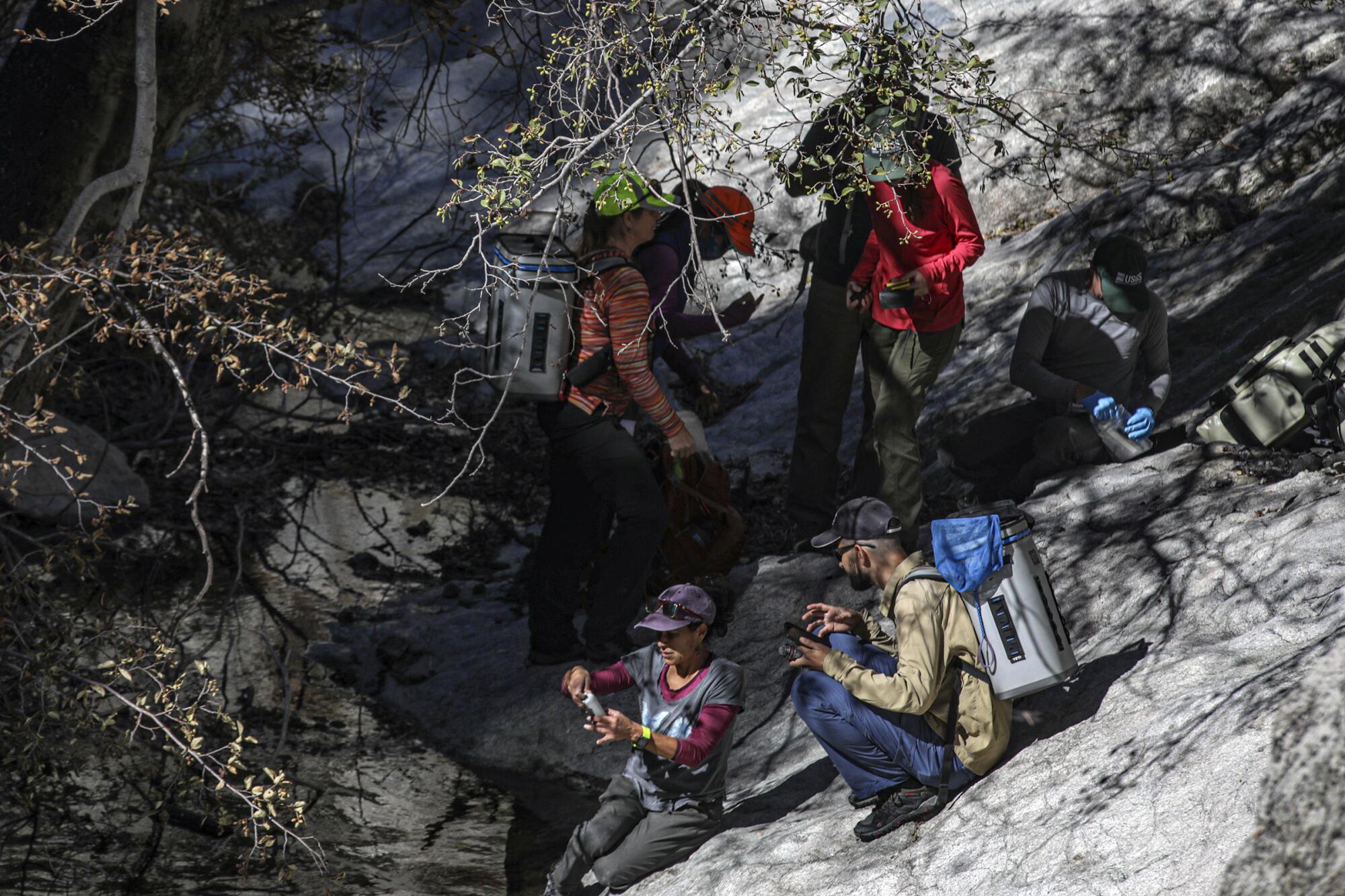
Today, they are holed up in hard-to-reach streams, reduced by drought to ribbons of shrinking ponds and surrounded for miles in all directions by blackened skeletons of oak and pine trees.
The water rippled cold around the biologistsâ knees Wednesday as they scooped up tadpoles from the pools at the base of mountains burnt to bare soil.
Giving the crew an approving nod, Fisher said, âWeâre trying, man, weâre trying.â
